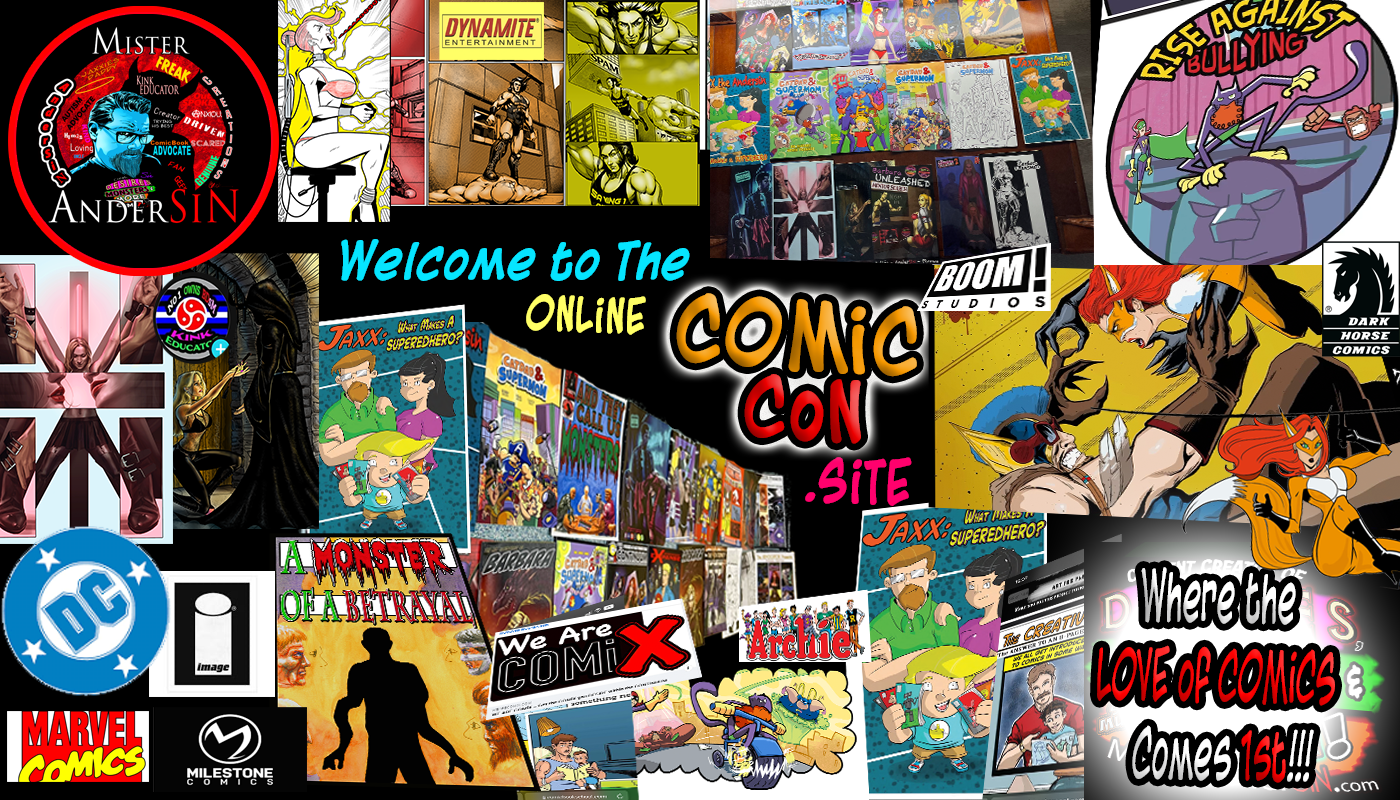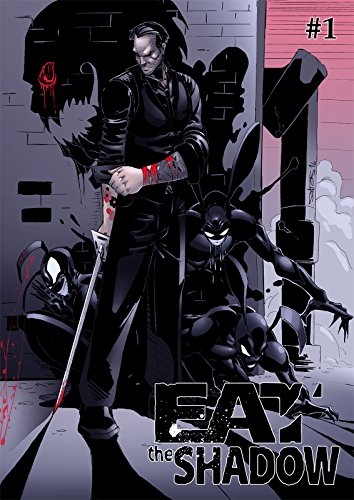Born out of a love for dark, gritty revenge thrillers like Sin City, The Punisher, Oldboy, and The Crow (the comic series), a love for literally anything by Tarantino (particularly revenge flicks like Kill Bill and Django), and shamelessly raunchy and provocative crime-horror manga (namely, Ichi the Killer – if you’ve never seen or even heard of the manga or its controversial film adaptation, do yourselves a giant favor and just look up some Google images of either)…
Eat the Shadow tells a dark tale that also offers a deeper, meaningful purpose. Because while essentially a gritty revenge thriller, at its heart it’s a story of personal exploration, discovery and transmutation that blends psychological theory with tons of grueling action and a healthy dose of explicit content. Though it bears mentioning here that there is certainly a method to all the madness laid out on the pages of this book. But more on that a little later.
First, let’s dish out the pitch:
After a night out celebrating his 24th birthday, and getting recklessly inebriated off a slew of hard drugs and alcohol, Kenji stumbles his way home to find the mutilated corpses of his mother and kid sister. He’s attacked by their killers, three twisted yakuza goons apparently carrying out a hit. Barely escaping with his life, Kenji is about to make a run for it when he’s suddenly confronted by Renji – his dead brother’s ghost – who convinces him his sole purpose now is to avenge their family. Together, the two brothers – one dead/one tripping – embark on a bizarre and deadly rampage in pursuit of an infamously sadistic yakuza boss known simply as, “the Barracuda”. Yet along the way, induced by his perpetual state of altered consciousness, Kenji discovers the most savage monsters he’ll have to face… are the ones lurking in his shadow.
This story, like its title, is based heavily off Carl Jung’s concept of the “shadow”: the dark side of the subconscious that, when left repressed and untended, can pollute the mind and ultimately pervert our perception of reality. Eat the Shadow aims to transcend the psychological/revenge thriller genre by candidly, and without apprehension, exploring the darkest depths of human consciousness, albeit in a very brash and unapologetically satirical way – fusing elements of gore, dark humor/satire, philosophy, psychedelia, and even the supernatural.
And now a little backstory:
The original version of Eat the Shadow (though under a different title I can’t at the moment recall) was a short story I wrote my sophomore year in college where I was studying film, specifically screenwriting. Though something I avidly professed then, and still like to spew now, is that I learned a lot more about screenplay writing from reading all of Tarantino’s scripts to date than I ever did in school. In fact, the story was written as an homage to everything I loved about Tarantino’s stories – the raw grit, the abrasiveness, the depth of the characters and their uncompromising resolve, the adulation of the anti-hero and their ruthless actions… and of course the flagrant aestheticization of violence.
What I love most, and all Tarantino fans appreciate, is that he tells his stories in his way. His voice and his flair shine through without filter. And I wanted to do the same. I had always intended to revisit this short story at some point. Then in early 2014, after growing somewhat disheartened by the status of other writing projects I’d undertaken, I decided to take a stab at this story that I couldn’t for years shake from my head. And so I did. And within a month I finished a complete script. And then something seriously very cool happened. I actually, honestly fell in love with the new version of the story.
However, it just so happened that at this specific point of my life I was quickly growing tired with the run-around of pitching scripts to agents and producers, entering screenwriting contests and things of the sort. I just wanted to SEE this thing made. I wanted to take its destiny into my own hands. And I wanted to do it my way. I’ve been a longtime fan of manga and comics, so the transition into this medium felt absolutely natural and, I dare say, like an unfolding of fate.
And so I began feverishly scouring the internet for an artist to help bring this story to life. I can’t say enough how fortunate I was to have found Jhomar Soriano – a two time award-winning manga artist whose published works include, Mr. Grieves, Arkham Woods, Retropunk, ARK, Liar’s Kiss, he is a contributor to the Continuum: The War Files graphic novel based off the popular TV series, among many other projects. I’d envisioned the story illustrated exclusively in black and white (largely to evoke that same raw, sinister mood you get from comics like Sin City and The Crow). Jhomar’s mastery of the medium made him a perfect match, his artwork beautifully carries the weight of this project. I was thrilled. I found my artist, and a damn great one. But fate would again happen to intervene, and that’s when I met Nico.
Nicolas Guido-Lavalle (better known by his moniker, Nico Sucio) reached out to me in response to a job posting I left on DeviantARt. In his message, he bluntly stated he was reasonably certain his style was not a match for what I was looking for, but encouraged me to check out his gallery regardless. I was curious so I did. The rest, as they say, is history. Nico is a self-taught artist versed in various trades of his craft. He has a background in street art (including graffiti), has working experience in animation and video game projects, runs a clothing, accessory, and toy store, all this aside from creating his own indie comics. His unique vision truly defies conventional standards and stands in a class of its own. It was seeing all this that I was then confronted by an opportunity I hadn’t at all previously considered.
I had always intended to include “trippy” scenes in the book – since our main character, Kenji, is all messed up off a concoction of opiates and psychedelics. But I never thought to show these in a completely different art style to that of the main action, or in full color for that matter. But it immediately made sense to me, of course I should do that! And so throughout the story, as we periodically shift into Kenji’s perspective – doors of perception flung wide open for us – we’ll be seeing a completely different world altogether, a distorted world filled with absurd characters and settings, drawn in a full-color cartoonish style. But Nico’s diversity is such that it wouldn’t seem right to peg him down to one particular approach. So the idea evolved even further to add a fluidity to the “trippy” scenes, so that throughout each point of the story the artwork for these scenes would directly reflect the character’s mood and general frame of mind. For example, in Part Two of the Prologue off our debut issue (where Kenji goes to hell), Nico decided to experiment with techniques like airbrush and splattering – which turned out to perfectly represent the hazy, nightmarish nature of that particular sequence.
These contrasts in styles will help emphasize the psychedelic nature of Kenji’s hellish trip, allow us to play around with some pretty cool visual concepts, as well as to evoke a more profound sense of altered consciousness for you, the reader. It not only adds substance to the story, but will provide a refreshing new look and feel for the book. But perhaps most importantly, it will allow us to explore Kenji’s subconscious in a way we couldn’t otherwise do, at least not in such a concise and vivid manner.
After all, this is a story of revenge and our character ultimately has to ask himself – how much of my humanity am I willing to sacrifice in the name of vengeance? Because while the idea of revenge is enticing, not all of us can or are willing to transform into a homicidal maniac overnight in order to see it through. Well, Kenji decides to shed and forego all aspects of his humanity. And as we peel back the layers, we’ll be able to shine a light on and actually see the true figure of the monsters hiding in his shadow.
The concept of the “shadow” has fascinated me for a long time, and I believe it’s something we all need to deeply consider and examine. It’s the idea that what we all judge as bad and choose to condemn either in others or the world at large, is really just a direct reflection of some part of our own personality with which we have not made amends. These repressed aspects of ourselves then get projected onto the world we create for ourselves. Some of the stuff you’ll see in this story is meant to push some buttons, might even make you cringe at times (or could have you smirking, you freak). The greater purpose behind this approach is a designed method to force you to look at the things we may not want to look at, the things we deem as bad, deplorable. It’s a way for us to stare at the ugly and not pretend it doesn’t exist, or pretend that in our own ways we aren’t as ugly or as “bad” as what we judge and claim to be above. Fundamentally, this all comes from an honest mind, a curious mind that wants to openly look at all the bad we inherently carry inside us. And through that process, hopefully, at the end we’ll all arrive at some ultimate truth.
Sold yet? Don’t take my word for it, you have to taste the shadow for yourselves before deciding whether or not you’re ready to take the plunge and eat the shadow. But if you’ve read this article the whole way through, chances are your subconscious wants you to see exactly what’s lurking within your own shadow. So we welcome you to join us, to traverse the darkness and discover what awaits us on the other side.
Our debut issue is now available on Amazon Kindle through the following link; https://www.amazon.com/dp/B073WFK6CK
You can follow along the journey and check out a Preview of the book on our website, where you’ll also find our social media pages; http://eattheshadowcomic.weebly.com/


Leave a Reply